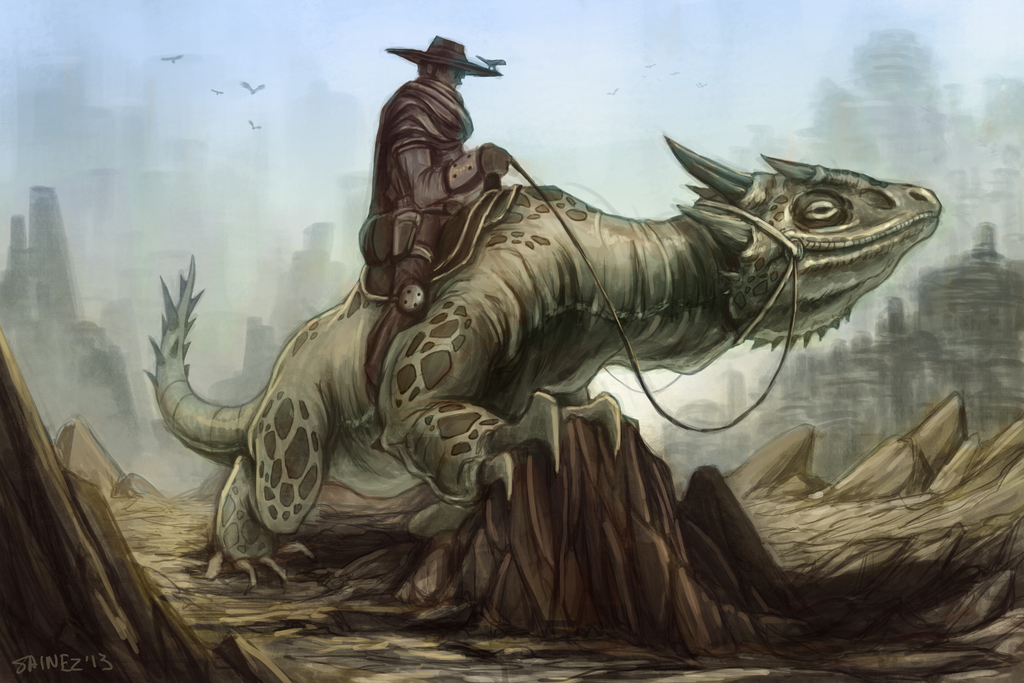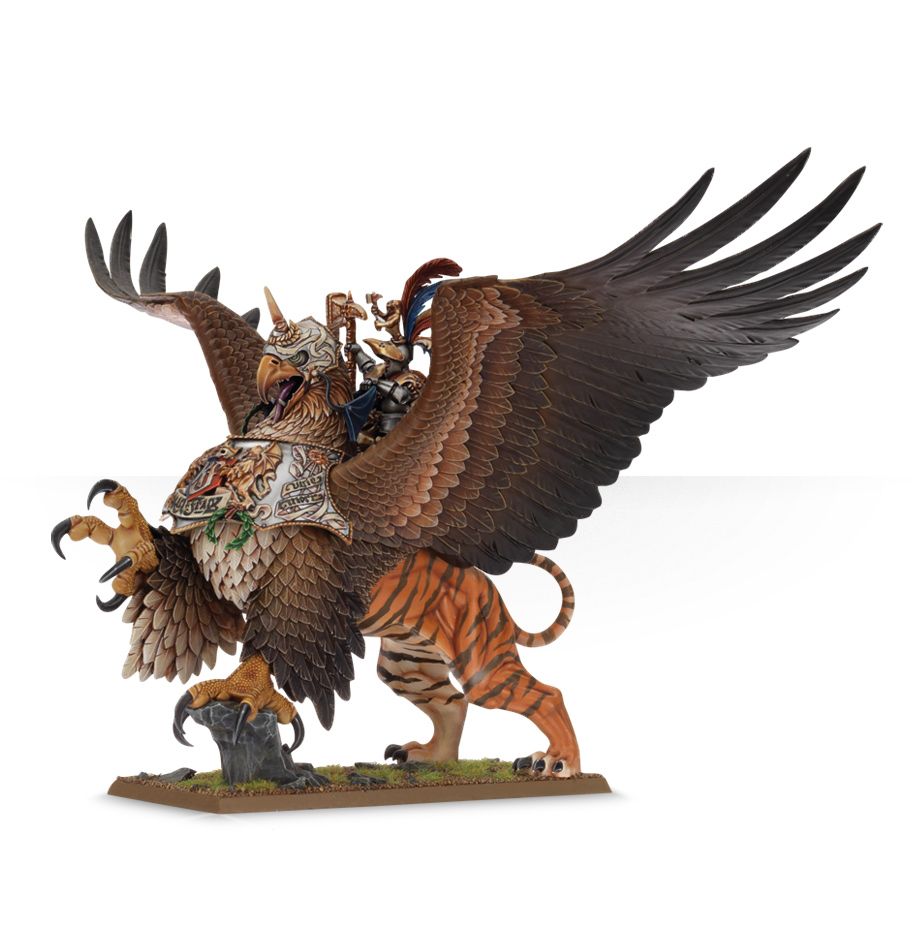In this article series, Ryder from The Brew Crew talks about all of the wonderful ways mounts can make a greater impact in your DnD or tabletop RPG campaigns.
I’ve always got two questions when I play any game.
- Are there Horse?
- Can I make the character I want?
I love all the weird and wonderful mounts there are to choose from in D&D and homebrew campaigns. After working with horses for 16 years in the real world, I’ve got a pretty good idea how they behave in different situations and what to consider when working with them. So what do non-horses bring to the table in role playing games? If their primary draw is ‘not a horse’, how should they function and behave in a game? What conflicts and boons can players expect from riding something a little more off the beaten path? I went through four unique mounts found in D&D 5e and broke them down by how they work as creatures, their pros, and of course, their cons.

The Giant Lizard
Native to the Underdark, Giant Lizards are somewhere around the middle of their ecosystem’s food chain. They love a tasty big bug or rat to munch on, and utilize their spiderclimb ability and infrared vision to avoid detection from larger or smarter predators. Some Lizards are semiaquatic rather than climbers, and can hold their breath for a whopping 15 minutes! Lizards loco mote on four legs or two hind legs. I personally envision them running like Jesus lizards. Giant Lizards are social animals, despite their reptilian like appearance. They live in packs featuring deep altruistic bonds, the stronger protecting the weaker. They vocalize with hisses and grunts, much like a crocodilian. Giant Lizards are kept as domestic mounts by prominent drow families, but they are generally less ‘trained’ than ‘magically compelled’ into being fearless and perfectly obedient. That being said, there doesn’t seem to be much need for that if you know a lick about good training. Sure, a giant lizard looks like a crocodile, but based on its diet and flavor text, they aren’t particularly dangerous to humanoids, preferring much smaller prey and being more the type to run and hide than stand and fight. Just keep it fed and you should be fine.
Pros of the Giant Lizard: Can accept multiple different handlers Spiderclimb/Hold Breath 15min Infrared Vision Lizard tongue thing Will eat common pests/Easy to feed Likely to stick with the group Bites enemies.
Cons of the Giant Lizard: Likely to shy from danger without specialized training or magical compulsion to hold it together Doesn’t do well in bright light.

Griffons
Like most flying mounts, Griffons find their homes among craggy mountains. Unlike the Lizard, Griffons are ambitious in their prey, taking on creatures much heavier than they are, such as horses. They are natural enemies with Hippogriffs and Pegasi, fighting for territory and breeding grounds. Quiet depressingly, all three are noted as being fiercely protective of their young, who are often victim to humanoid kidnappers seeing exotic animals for trade. As such, adult griffons are known to be very defensive, choosing to fight and chase away potential threats rather than relocate. Once the food supply in an area drys up, Griffons will move on in search of greener pastures. Or bloodier. These bird-cats love to eat horses, and will quickly dispatch any rider or herder that is dumb enough to get in their way. It’s important to consider how your player is obtaining their mount, as that will surely determine how the animal has been trained and must be kept. A captive raised Griffon will be content to stay domesticated if it’s being treated well, has been expertly trained, and has bonded to a rider. Ample food, shelter, and entertainment would be needed to keep the beast healthy and happy. When raised from a young age, Griffons can become very loyal, willing to fight to the death on behalf of its rider, but there’s always the lingering moral question of how that egg or hatch-ling came to be in captivity in the first place. This is good to keep in mind if a good aligned character is the intended rider.
Pros of Griffons: Looks rad as hell. Flies. Will literally die for you. Claw and Bite baddies.
Cons of Griffons: Will only take orders from one person. Might fly away if given enough chance. Needs lots of space and food. Expensive to buy and train.
Moorbounders
Natural Habitat and Behavior These massive, bounding cat-like creatures are from the swamps of Wildemount, and they are deadly as the land they come from. They are incredibly effective hunters with a high success rate per hunt- and they will eat anything they can catch. There is not much detail given about Moorbounder behavior in non-captive spaces, which leaves a lot of room for DM discretion in terms of how domestication changes these creatures. When kept captive, Moorbounders are terrifying. Litter mates will eat their younger siblings and ‘trained’ adults are known to attack anyone other than their bonded rider. DMs should be note that animals, particularly wild animals, behave very differently in captivity compared to how they do in the wild. How might Moorbounders hunt if food is in scarce supply? Would they bide their time? Or go after anything that moves, even when energy is a limited resource? Bonding with a Moorbounder is similar to bonding with a Griffon, if a bit less refined. Keep a close eye on your beast around things you don’t want eaten- friends and pets included.
Pros of the Moorbounder: Can carry 2 medium humanoids. 20 Foot Vertical Leap. Big Dumb Fish eyes. Will Claw and bite baddies. Easy to house.
Cons of the Moorbounder: Will literally eat anything that isn’t the rider and sometimes the rider Needs specialized tack. Will eat you and your friends if you don’t take care of it right.
Wyverns
With our last mount for this time around, we come to the biggest of the bunch. Wyverns occupy a similar ecological space to the Griffon, being territorial hill dwellers. Hippogriff is a favored diet for Wyverns, and weighing in at around a ton, it’s no surprise these Wyverns eat a lot. They are excellent areial hunters, able to sting their prey first and rake with their claws in second.. Wyverns are very large, and so need to be kept in suitably large housing when stationary. Wyverns fall into the ‘bond’ category when it comes to training, so this is a one person animal. With this creature, that bond is somewhat double edged, as if one partner falls, the other is driven mad with grief. A bond is very difficult to achieve with an adult Wyvern, so it is recommended that riders raise a beast from the egg and work with an experienced trainer. Even then, the Wyvern’s tendency towards violence puts them on par with Griffons and Moorbounders in terms of danger. Being a higher intelligence than a Moorbounder or Griffon, a properly bonded rider can trust their Wyvern will respect their wishes in terms of what’s edible. You don’t have to tell a wyvern not to eat the paladin’s lame-o horse twice, Wyverns can speak Draconic, so there’s no excuse when it comes to comprehension. Put in those Duo lingo hours and learn to talk to it!
Pros of the Wyvern: Can hold a conversation. Flies. Little Dragon Bro for life. Can bite, claw, and sting.
Cons of the Wyvern: Will go murdery if you die. Will drive you grimdark if it dies. Might eat you if trained wrong. If it wags it’s tail like a dog it will kill someone.
Which mount sounds suitable to your campaign? All have their bonuses and weaknesses, and depending on the campaign you want to run, introducing exotic mounts to your players can add both fun and danger.
If you like articles like these make sure to check out more Dungeons & Dragons articles and other tabletop RPG Homebrew tips from The Brew Crew! Also remember, FLG sells DnD accessories and other tabletop goodies in their webstore!
Happy riding!

